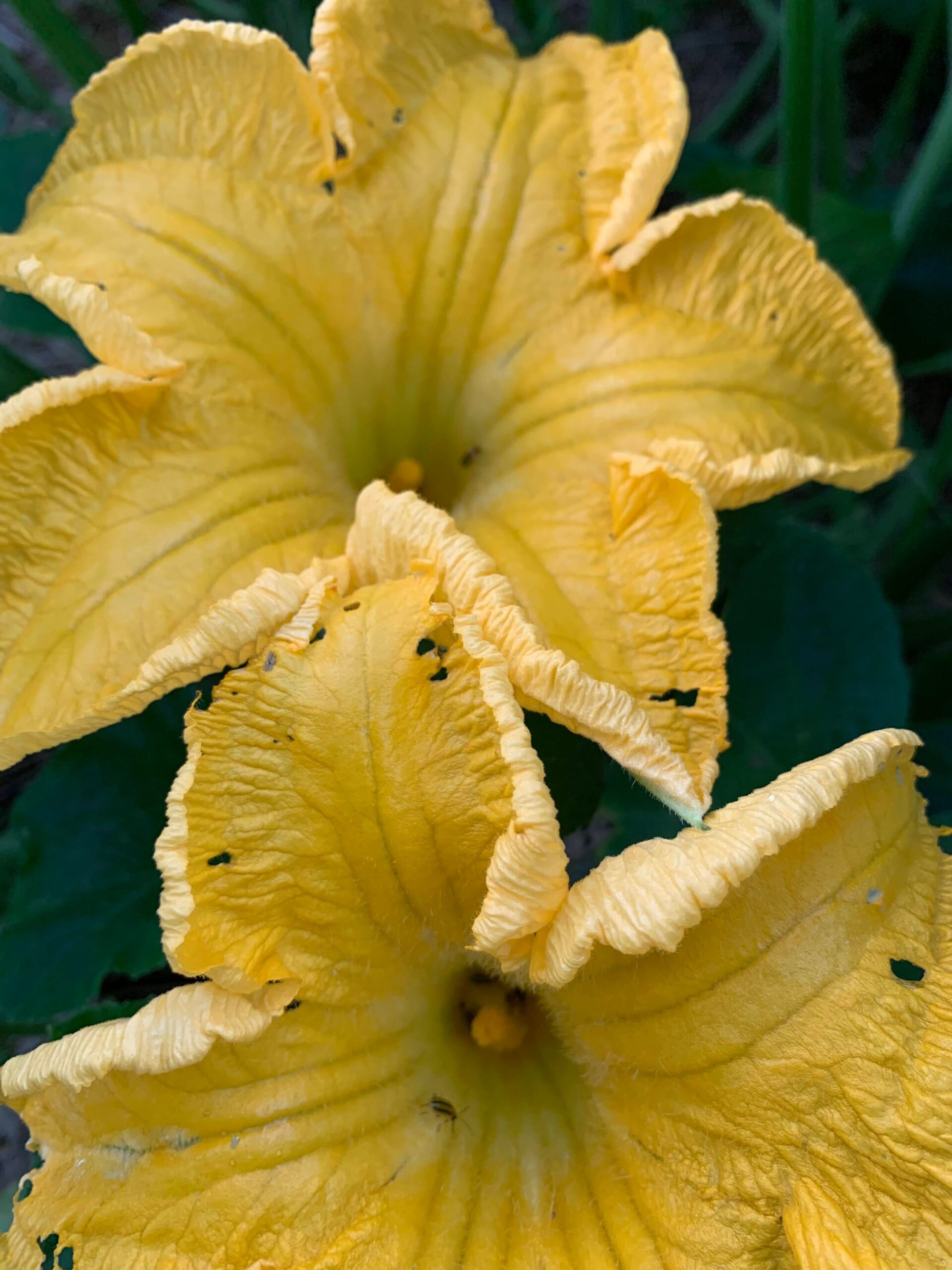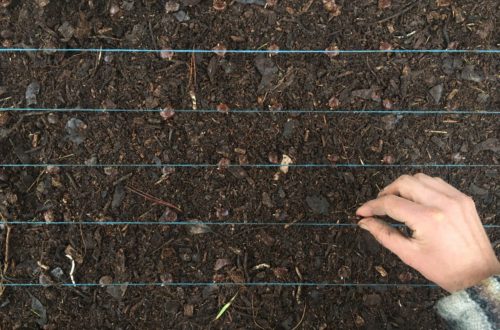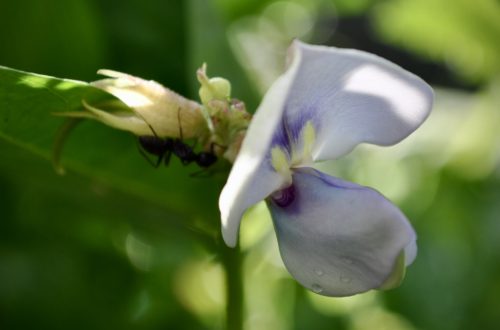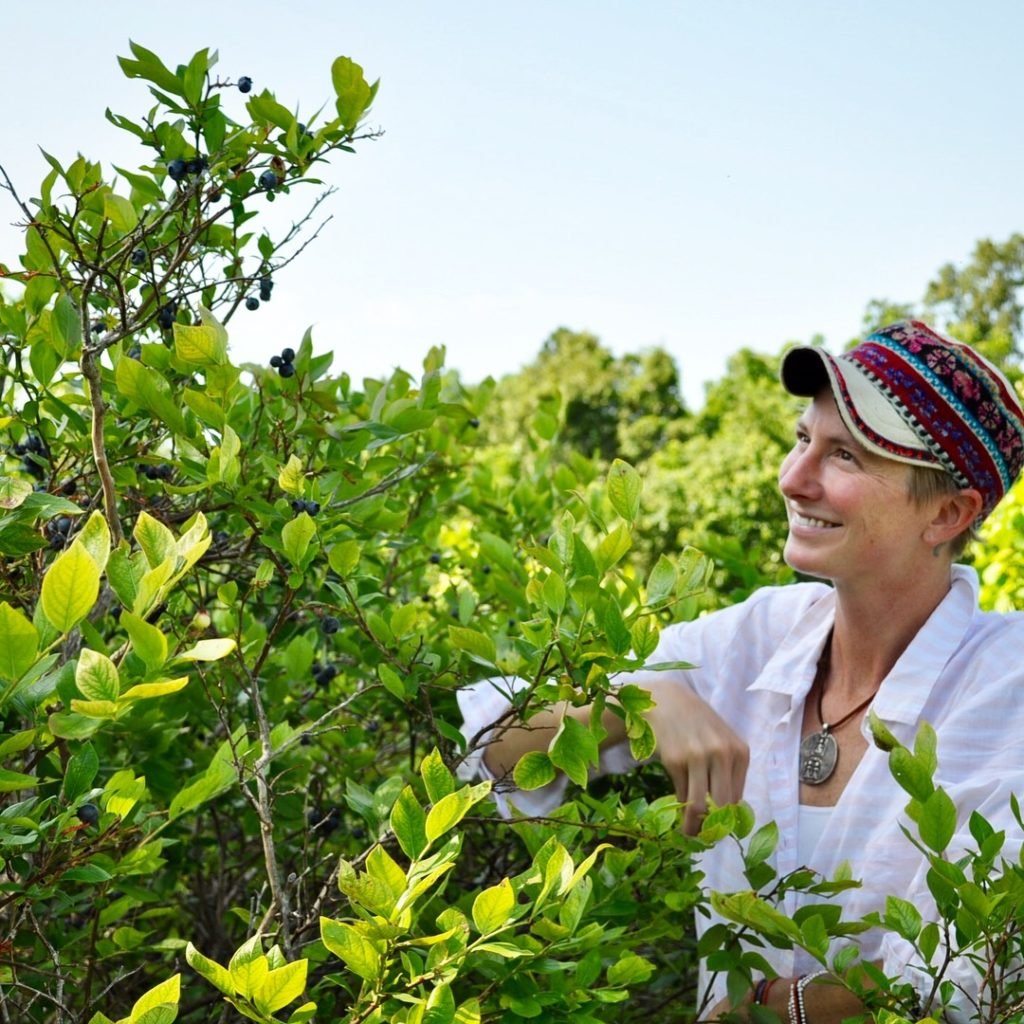
Why We’ve Chosen Perennial Agriculture
Why Perennial Agriculture?
You hear us talk about perennials, edible landscapes and food forests a lot. Why have we chosen to focus on perennial agriculture? Through this missive I hope to clarify our motivations.
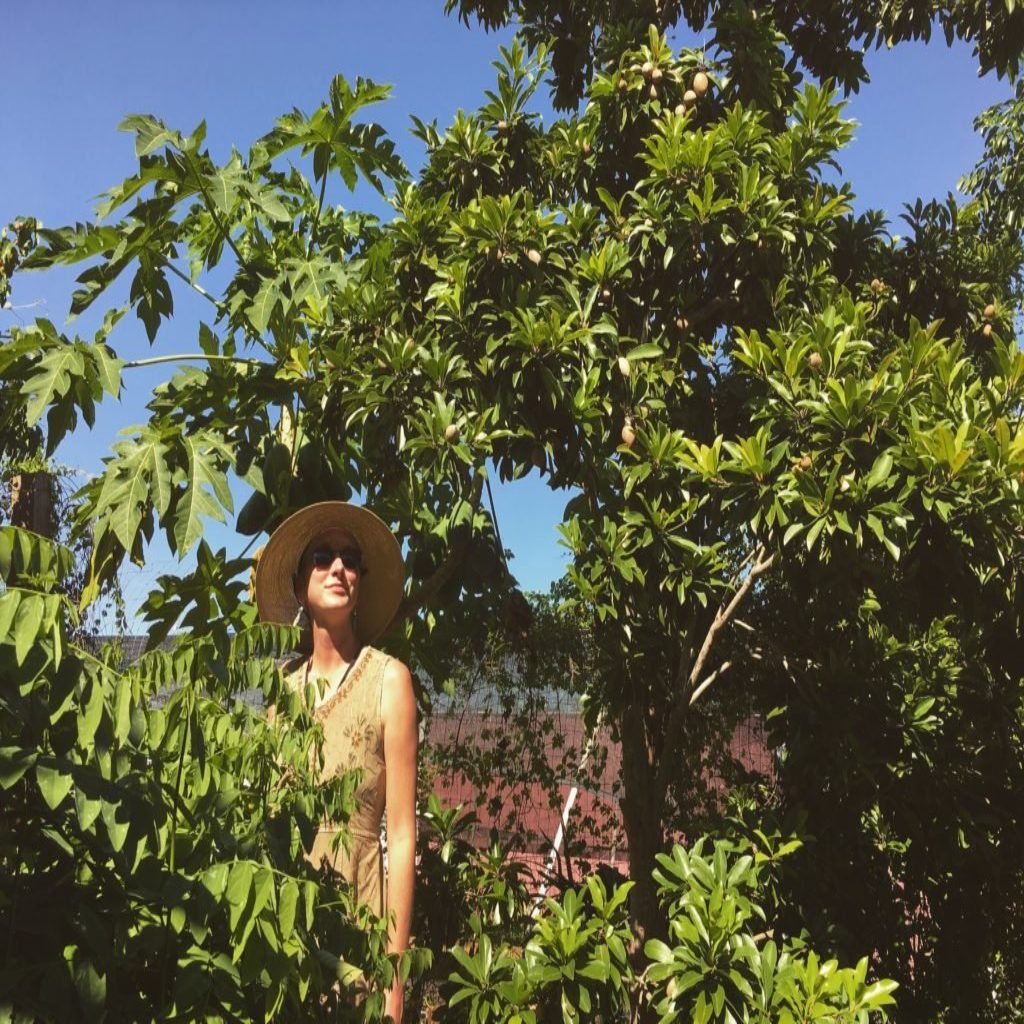
First some backstory:
Ini and I both spent countless hours working on organic farms specializing in annual production before ever seeing a perennial model. It’s important to make this point that it is our experiences with annual agriculture, not only the philosophies surrounding the practice of perennial agriculture, which, in a way, made this decision for us.
Before I had ever heard the word Permaculture, I was working on organic farms and gardens with plants most people are familiar with- your basic veggies and herbs. A smattering of raspberries, asparagus, and perennial herbs were all I had seen of “plants that return” while I was getting my primary education in growing food.
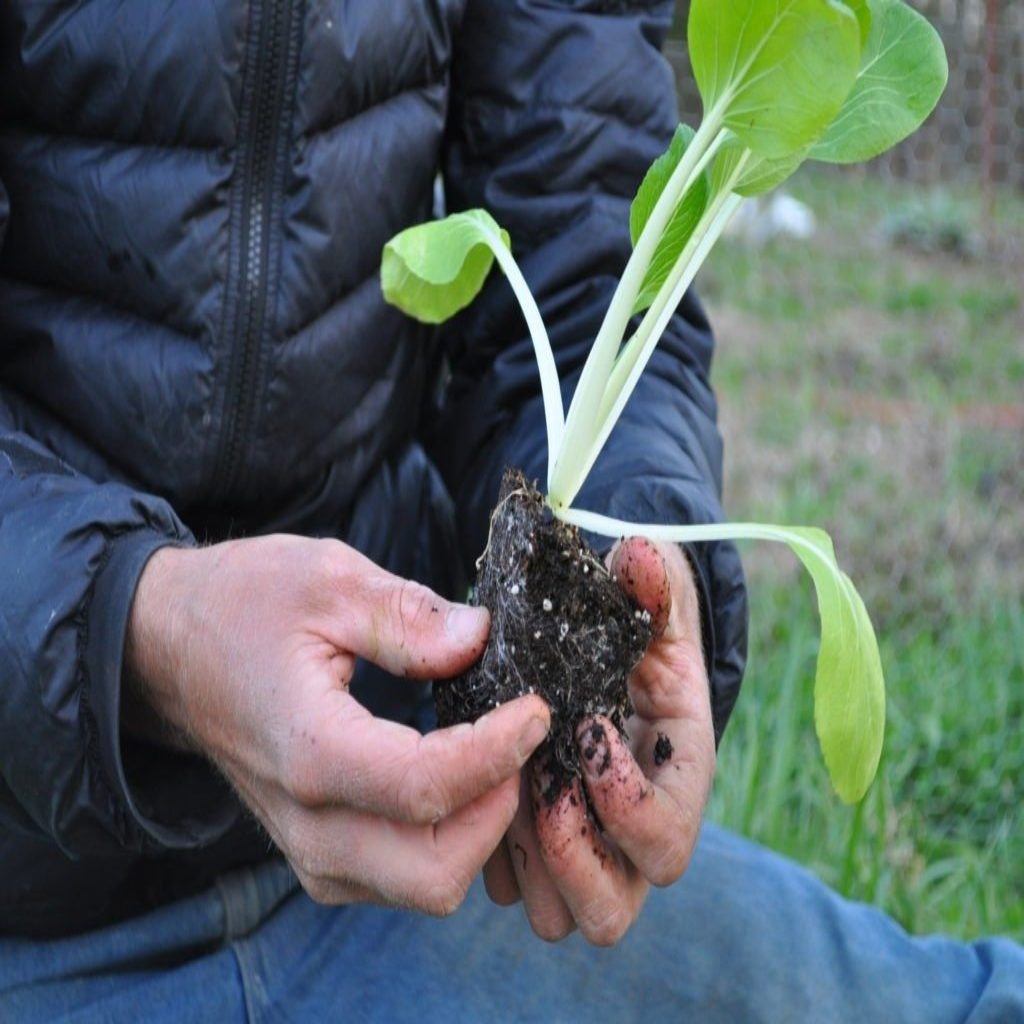
It wasn’t until, after years of back-tiring work, I started to get deeper into Permaculture, edible landscapes and food forestry, yet when I started to catch wind of the philosophy I was pretty sure there was no going back.
Annual gardening has a lot of great things going for it and a capitalistic based production farm is drawn to many of its benefits. For example, in a short amount of time you can boast high yields and delicious well-known crops (that the consumer base already knows about). There isn’t the need to wait years for something you’ve put in the ground to yield, as is the case with perennial agriculture. This model of quick returns fits right in with the need of the consumer. What would an organic farm sell at market in the interim of planting a tree and when it finally bears fruit? With only so much time and energy on a farm (from a human perspective), annual organic gardening is already a lot to bite off – let alone incorporating a perennial vision into the mix.
As we worked on farms, our backs became more and more tired and we realized the futility of only thinking about the current season (in terms of crop yields – not in terms of soil necessarily as many organic farms take very good care of their soil for long term gain). I worked on one farm that had rows of perennial food crops (like asparagus, strawberries, raspberries, sage and more) that they took to market alongside their annual produce. They talked frequently about upping the perennial production for all that it required per year was perhaps a bit of weeding, some more mulch, perhaps some amendments and a drip irrigation.
There was no seed starting (including trays, potting mix, the time it takes to tend, etc), up-potting the seedlings into larger trays as they grow, plant loss that occurs with young plants (in relation to established plants), soil prep, intensive cyclical labor, etc. In fact, there were greater yields each year for less and less work. This seemed like a gardener’s dream. Yes there was a lag time between the sowing and harvest, but, all things considered, it seemed worth the wait.
With this vision in mind, and as our journeys started to join in a united vision, Ini and I visited more perennial edible landscapes and we read any books/articles we could about food forestry, perennial agriculture and lesser known perennial food crops. When we met, both of us had come to this vision and as our dreams started unfolding into the present lived reality, it seemed clear what we would do: It was time to ground our visions and start creating perennial edible landscapes.
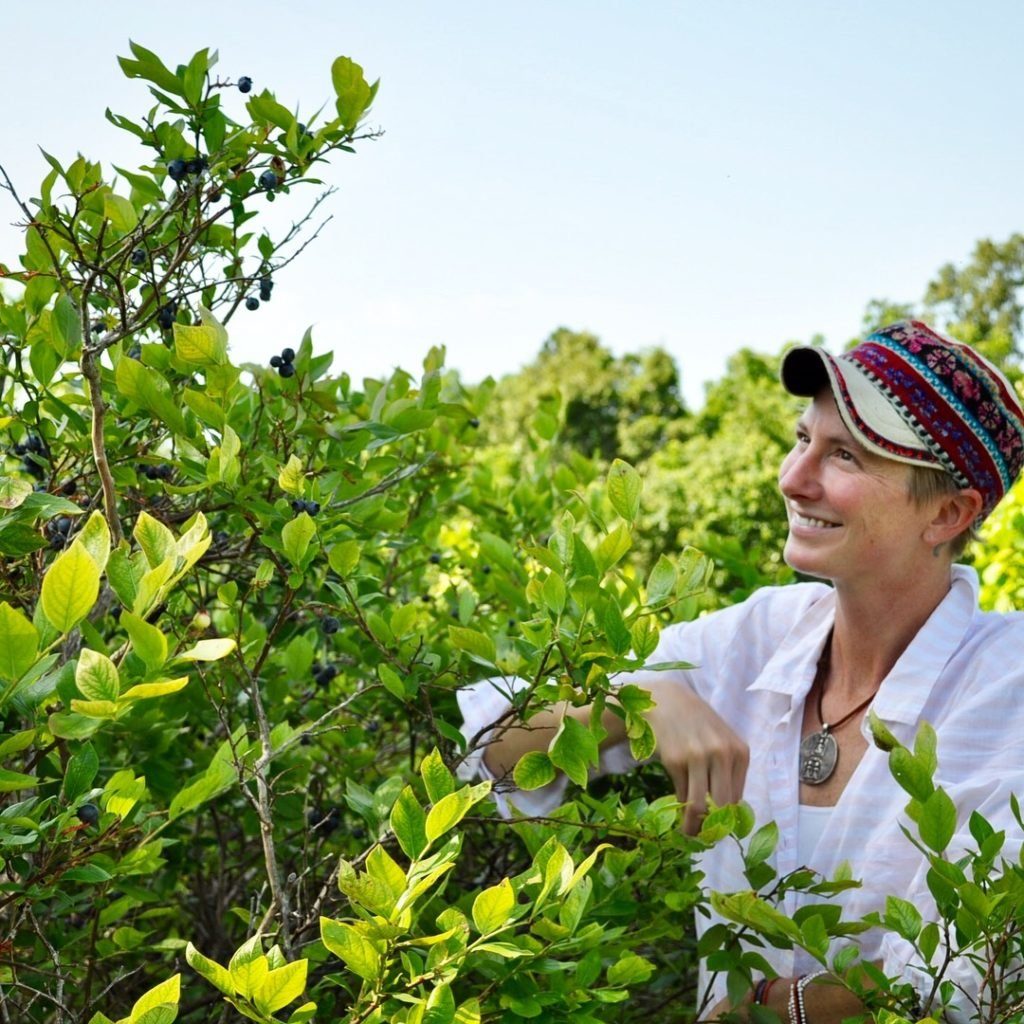
Why Perennial Edible Landscapes
As mentioned above, we already had extensive experience growing annual food crops – and I predict that we will always take part in this to an extent. However, the perennial vision is the one which propels most of our actions and keeps us up late at night making excited exclamations over new crop discoveries that will do well in our area.
Perennial Edible Landscapes In Comparison with Annual Agriculture
– Perennial Agriculture doesn’t disturb the soil- it leaves the soil food web and biome in tact.
This has many benefits, but primarily (as many also tote in annual no til gardening), not disturbing the soil reduces erosion, allows the diverse biota of the soil to continue in its strong web formation, doesn’t flip top soil beneath subsoil, and doesn’t kill countless creatures existing in the soil (which are beneficial to the soil as they decompose, aerate, poop, feed on one another creating biomass and keep balance in their micro-ecosystem). When left in tact, healthy communities form and strengthen in their diversity and they balance and stabilize. Though annual tilling produces greater yields in early years, one is essentially continually disturbing these fragile but useful communities of soil microorganisms that help us grow healthier plants.
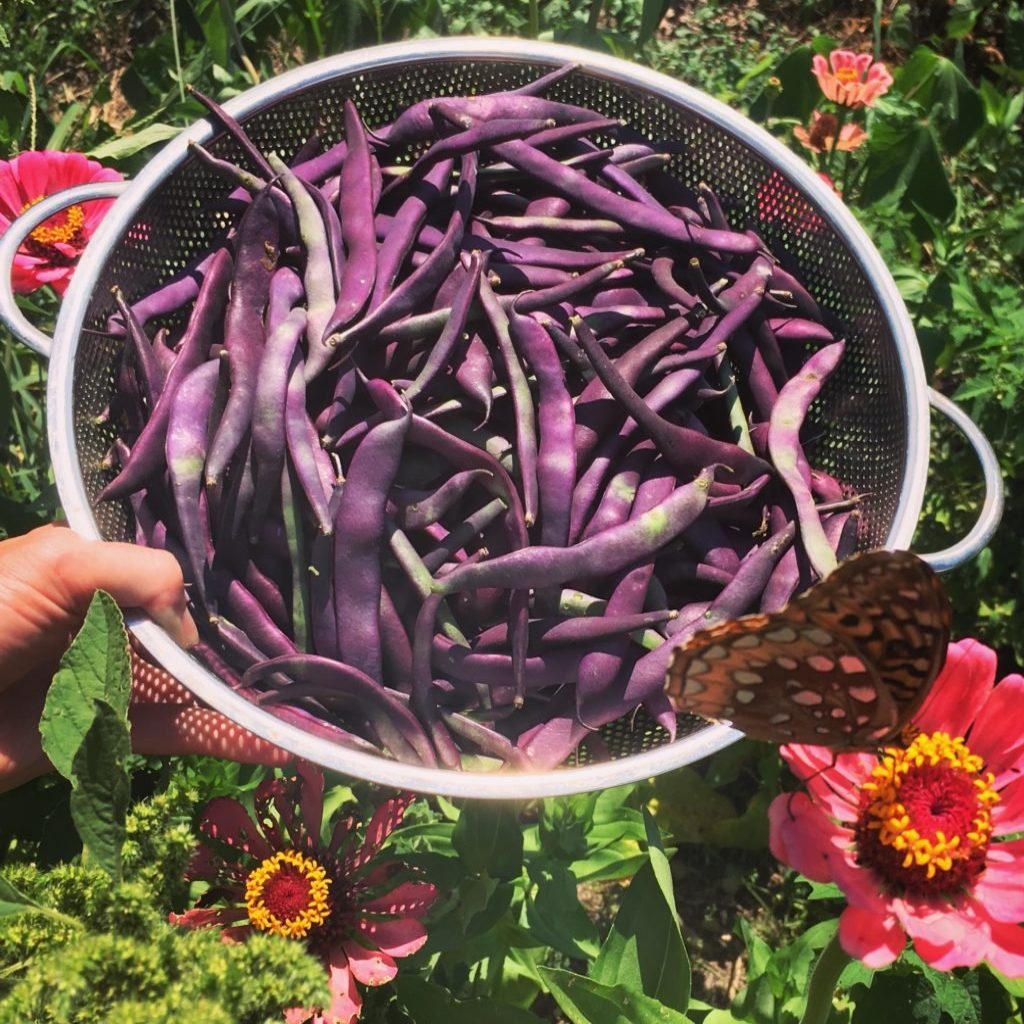
– Perennial Agriculture is Nature’s Way: Creating Balanced, Perpetual Ecosystems
Permaculture seeks to align human relations with the earth by observing what the earth is already doing. By aligning – not dominating, overworking, exploiting or putting our ideas onto – we can reap much greater yields than if we work against the way of nature.
I think this point is best demonstrated through an example. When you create a garden, tilling and baring the soil, what happens alongside the crops that you grow? Weeds come up, right? Opportunistic, often edible or even medicinal, plants. You’ll have then growing taller than your crops if you’re not careful! And if you leave your garden unweeded, un-mulched and untended, they’ll take over your garden forming a large, nearly unpenetrable mat. In reality, the soil abhors a void and covers itself. These plants draw up nutrients from deep in the earth and decompose aiding the soil and they also stop erosion from happening. After time, if you let these plants grow, pioneer species will also come in – these are the shrubs and brush, scrubby opportunistic un-picky plants that are very adaptable. You’ll also see hedges of these on the edges of farm fields and forests all over. They are the transition plants.
After this, trees will pop up and vines and what was once barren soil no longer resembles a scrubby, brushy field. But you’ll notice, nary a space is left from what you had initially cleared. Nature is progressing toward stability, which is often (depending on the climate/habitat/water availability/etc) a forest with all of its many layers. By planting food forests, with edible ground cover, shrub layer, midstory, vining and canopy species, we are actually taking part in creating an ecosystem that nature finds very stable. We are simply selecting which plants go into nature’s algorithm. Unlike annual agriculture, we wont need to dig up, replace, seed start and continually work the soil. Instead, with each year, this ecosystem comes into its own and matures, producing more yields with each year and remaining very stable.
– Easier on the Back
Although there are undoubtedly greater initial yields with annual cropping, over time perennial food systems yield just as much, if not more harvests with less overall work. As I worked on farms during the summer seasons, at times 8 hours a day nearly every day of the week, my back was the first thing to speak up. It hurt! Often! One farm I worked at was an organic farm of about 8 acres that had a CSA and also went to a weekly market. We produced a lot of food for our local community, but the farm was often understaffed and it had trouble making ends meet – even though we were working as hard as we could and producing as much food as the land would allow in any given season. This added to the back pain – knowing that we would need to struggle at this again the next year, while we heard our efforts literally weren’t paying off to make the farm a sustainable operation. This isn’t an isolated story- many farms struggle to “make it” economically even though they’re producing as much as they can and providing a very needed service for their communities! (Could write an entire article on this alone!) When my back really started to hurt from all of the bending over and hard physical labor, I started to seriously consider other options – options that could be sustainable in terms of my back, labor, money and for the land.
– Greater Yields, Less Work
Perennial agriculture is a waiting game. Yet, after that waiting game is over, the yields are tremendous and longevous! A farmer knows well that what you reap is what you sow, but there is no harm in extending this cycle. In fact, after the initial work of clearing the land for planting, preparing soil, planting, watering, mulching, the work load drops off tremendously.
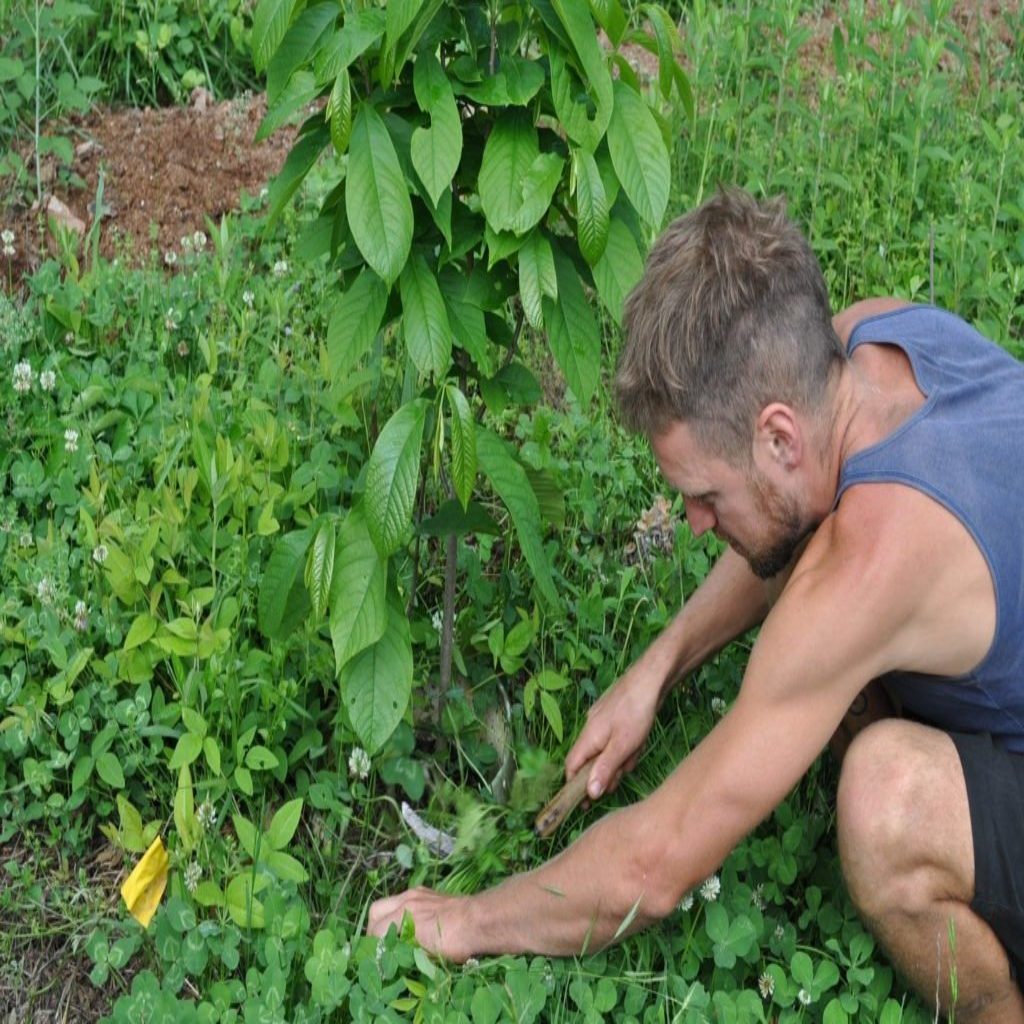
There is a comparable initial input of time and labor and yet, with a little tending each year, the benefits continue coming with hardly any work! This is not so in annual gardening when, after each season, usually one just has to contend with equal work loads of the previous year, slightly more depleted soil, tons of beat up used seedling trays, piles of disorganized crop covers, and perhaps even long sheets of ragged plastics used to suppress weeds. In comparison, a food forest just keeps getting better each year! When done right (and by this I mean planted after observing your locale for quite some time with good spacing, tended with good watering and much mulch -for weed suppression, water retention and encouragement of healthy soil microorganisms), food forests will take care of you for many years to come!
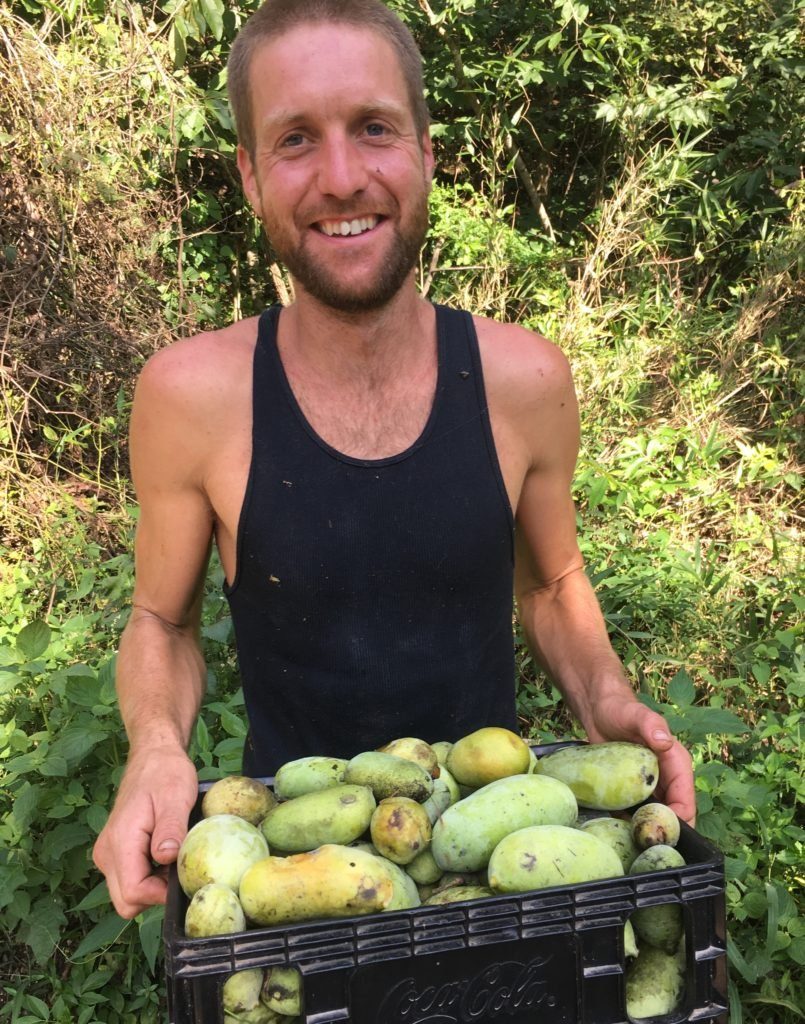
– Fun to plant and tend
This is the step we’re in right now at Mountain Jewel. By getting a grant through EQIP to plant fruit and nut trees, we’ve been able to get off to a great start in actualizing our perennial agriculture dreams! We’ve bought hundreds of trees, shrubs, rhizomes, tubers, herbs and more and planted them acres around the property. The initial clearing (of scrub land, basically) is the hardest work. Fires, rakes, a grub hoe, a chainsaw, and a lot of sweat are our main tools. After that, the design and planting is fun! We are careful to heavily cardboard and mulch (to suppress weeds and retain moisture) initially and after that we are given the task of waiting and tending until things start to bear fruit!
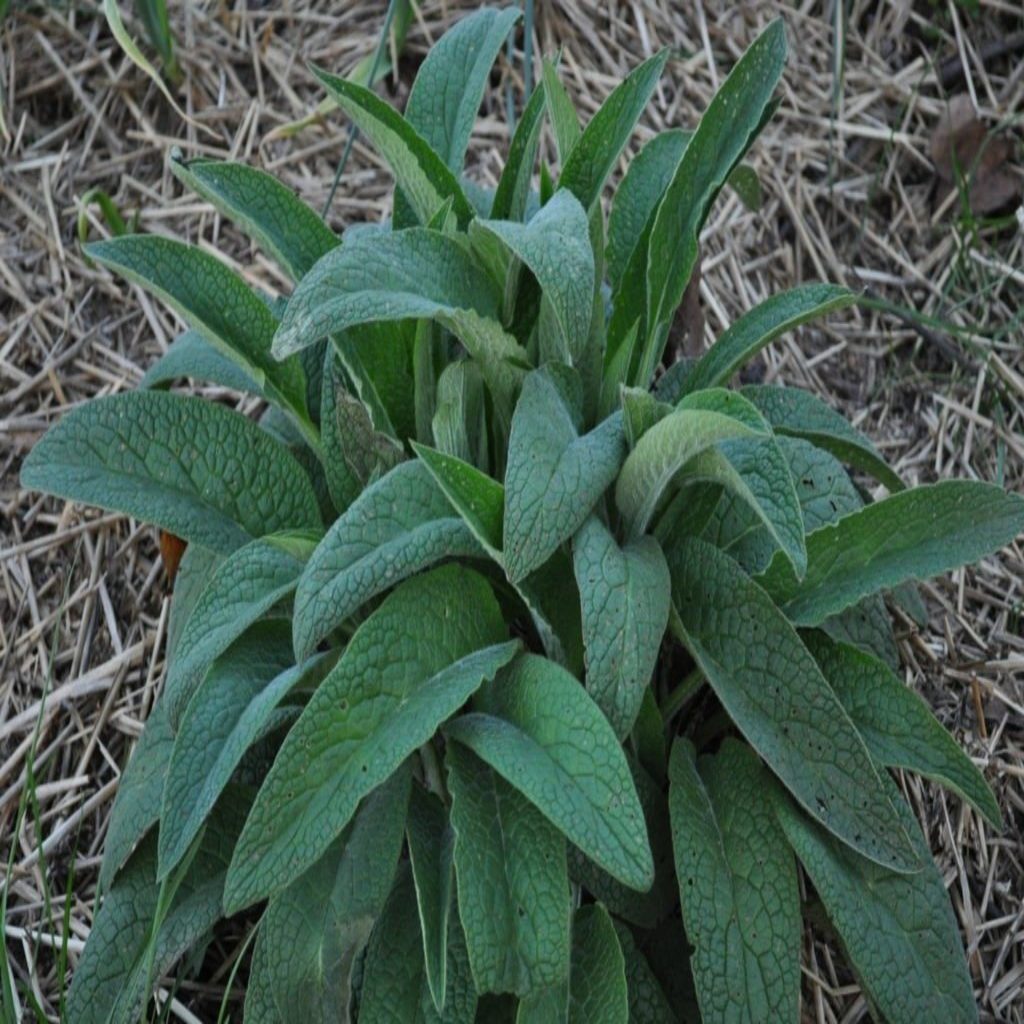
Some plants, like comfrey, which is a chop and drop medicinal mulch plant par excellent!, we keep dividing and spreading all throughout the understory. Other plants, like thornless blackberries, vigorously replicate themselves (which accounts for our many plants we have for sale at the Homesteader’s Coop!). And many other plants, like many of our standard fruit trees, have yet to really make a peep. These plants take longer to bear, to really rev up per say, but once they get going they produce quantities beyond what any annual crop can! It’s a long term vision.
– Diversity Rules the Day
One of annual agricultures greatest faults is its susceptibility. It’s only natural as it’s going against the way of nature. Humans have tried to curtail this basic law by creating a massive warlike business of -cides (herbicide, pesticide, etc), but the fact remains that annual monocrops (one crop in an area instead of a diverse array) are more susceptible to disease and pests than a diverse ecosystem. Why is that? If you only have one crop in an entire field and a predator insect comes, they’ll wipe out your entire crop. The more variety of crops you have, the more resilience you have against pests coming and destroying it all. In a perennial ecosystem, we strive to up the diversity tremendous proportions and include guardian plants, like many in the allium family (garlic, onion, etc) that confuse predators and slow them down and even avert (in the case of marigolds) them from their mission. Annual agriculture can also employ these techniques, but often it is far easier to mass produce (which is what modern agriculture focuses on) anything of a diverse nature, as different plants need different things. Many smaller organic farms do employ these techniques and that is one of the ways we can help strengthen our human chosen edible agricultures and not use pesticides or herbicides simply to grow food! Always buy organic (if your budget allows) for many reasons – this being a major one.
– Growing the Soil with Ease
In annual agriculture, the soil often takes a hit. Plants are grown in it each season and, as they extract valuable minerals and nutrients and go off to market, leave the soil depleted. Many organic farms do an excellent job of building and maintaining, or even boosting their soil quality, yet it often takes expensive, non locally sourced and timely to apply inputs to do the job. In contrast, with all of the cover crops (which annual farms also employ) and mulch that we apply onto our soils, over time we end up with really nice top soil! Again, it takes time to decompose and we still may add amendments at times, but the need is far less than in an annual model.
Time, Necessity, & “The Way Things Are” as Main Factors
I could go on in sharing some of the reasons we chose to focus on perennial agriculture and I’m sure I’ll think of many other reasons and may do a Part 2, but, in closing, I want to speak to the inhibitory factors against perennial landscapes that keep many farms, homesteads, gardens and, indeed, humans from adopting these methods. First, I think many people simply don’t know about the breadth and scope of their option to produce copious amounts of food through perennial edible landscaping. Partly I am writing this article to get the beneficial word out there so more people can adopt perennial styles!
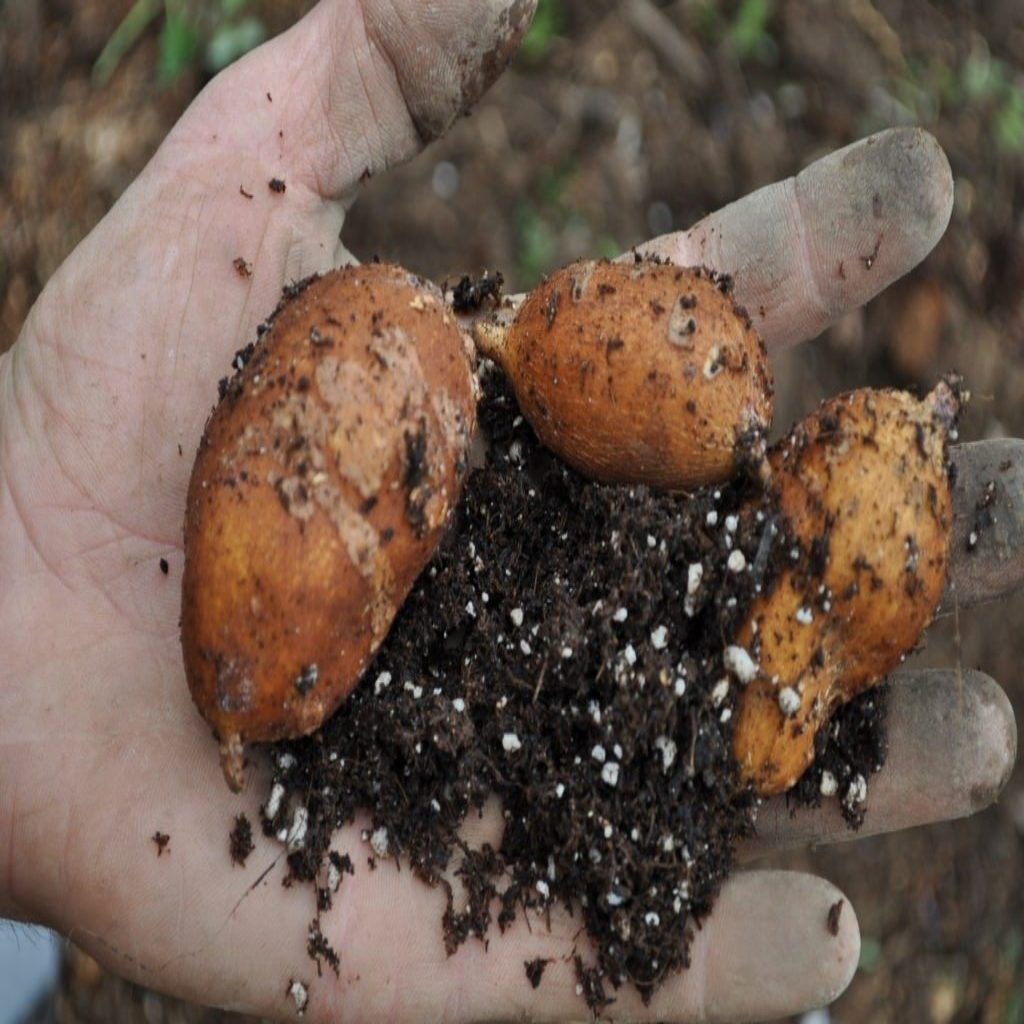
Secondly, we are often addicted to “The Way Things Are” as humans and unfamiliar (or lack of familiar) crops often take time to be accepted. One lady in our local area, in response to talk of setting up a vegetable market in our local town, humorously said, “We likely wont eat those veggies for if our grandmothers didn’t eat it, we wont either!” It’s human nature to eat like our parents did, although there is increasingly a lot of deconstructing of dietary choices going on and I hope this lends itself to opening the mind towards a perennial shift. And as I said, I’m not advocating a complete doing away with of common annual vegetables (we still have an extensive annual garden), but into shifting the focus, or even 3/4 of the land use to perennial agriculture.
Necessity is another huge inhibitory factor against perennial agriculture. When we first moved to the homestead, we planted crops that would yield quickly for us as we needed food Now! (Yes, we still go to the grocery, but set ourselves to try to grow us much as we could ourselves.) Many perhaps don’t have the luxury of embellishing a long term fruition as they need food now to survive. However, I would encourage anyone in this position to consider putting aside some effort and space for perennial agriculture and look at it as an investment for your future. Even one tree, shrub or variety of tuber a year adds up over time and while you’re busy with the annual garden, it sure will be nice when that apple tree finally blooms!

This brings me to my last point, which ties right in there with necessity: Time – many say they don’t have enough of it, but it’s all in how we sculpt our days. For me, the waiting game of perennial landscapes is just a part of it. We have planted hundreds of plants that we haven’t gotten anything from yet– and that may truly be too much for some people. Yet again, consider it an investment for your — or your kids or grandkids future. Every perennial plant that you put in the ground is sure to increase in yields with every year with a little care and tending. If we do this and take a slow and steady approach, we will soon be very grateful for the actions of our past selves and have lots to share with others.
In the meantime, we also have lots we can mindfully harvest from the wild!


